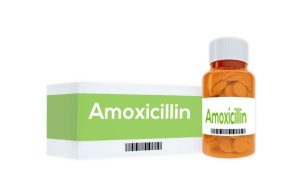Your dentist prescribed an antibiotic to treat your tooth infection, and now you’re wondering how it takes for amoxicillin to work on a toothache.
We’ll address this, as well as other questions, in this article:
- What is amoxicillin?
- Is amoxicillin good for toothaches?
- Does amoxicillin take away tooth pain?
- How long does it take antibiotics to stop tooth pain?
We hope this article will clear up any questions you have about treating your toothache with amoxicillin.
What is amoxicillin?
Antibiotics are frequently prescribed to treat bacterial infections. Amoxicillin belongs to the penicillin family of antibiotics, which are very efficient in inhibiting bacterial development.


Amoxicillin is a medication that must be taken orally and comes in three different forms: instant release, extended-release, and chewable tablets.
It’s commonly taken with or without meals every 12 hours (twice a day) or every 8 hours (three times a day), according to medlineplus.gov. Always take antibiotics as instructed by your dentist.
Is amoxicillin good for toothaches?
Yes, amoxicillin will help in the treatment of your tooth infection. One of the first antibiotics advised for the treatment of a tooth infection is often amoxicillin. Antibiotic therapy has proven to be useful in dentistry.
Amoxicillin, like other antibiotics, treats the specific bacteria that cause the infection. To remove the source of the infection, the underlying cause must be treated, such as with a root canal or extraction. If the underlying cause of the treatment is not addressed, the antibiotic’s effectiveness will be limited.
Dental infections can be odontogenic, meaning they originate in the tooth, or non-odontogenic, meaning they could result from bone, soft tissue, or another source of infection within the body. Most acute dental infections are treated with antibiotics such as amoxicillin over a 7 to 10-day period.
The length of time it takes for a patient to see results is determined by the nature of the infection and whether underlying treatment is being administered concurrently with the medication. For example, dental toothache infections that cause swelling can take days or weeks to heal.


Let’s take a look at the various damaging concerns before we talk about how long it takes amoxicillin to work on a toothache.
If it’s only a small abscess, the dentist may perform a root canal to totally remove the infection and preserve the tooth. However, if the infection is very bad, the dentist or a doctor might say that the infection should be treated first before the root canal.
This is accomplished by cutting a tiny slit in the gums and allowing the pus to drain. After that, the affected area is cleansed with saline.
How long does it take amoxicillin to work on a toothache?
Antibiotics work rather quickly to treat tooth infections and alleviate discomfort. If you follow your healthcare provider’s advice, amoxicillin should take effect within a few days. However, even if the pain and swelling are gone, you have to finish your course of antibiotics as prescribed.
Amoxicillin, like most medications, has common side effects such as diarrhea and nausea and can cause hypersensitivity to penicillin-type antibiotics. If you are frequently prescribed amoxicillin for other reasons, its effectiveness for your treatment may be limited, and you may require another antibiotic.
Antibiotics are typically prescribed based on the type of bacteria thought to be responsible for the dental infection. They are also not recommended for treating acute dental infections rather than chronic ones.
While you wait for the amoxicillin to take effect, your dentist may advise you to use painkillers such as ibuprofen to alleviate the symptoms. Should you not feel better after a week or your symptoms are getting worse, get medical help from a medical professional.
Here are some things you should know before using amoxicillin:
- Although amoxicillin is generally safe to use, the FDA classifies it as a Class B drug for pregnancy. However, when prescribed early in pregnancy, research has shown that it increases the risk of cleft palate defect.
- Amoxicillin may not be recommended for patients with kidney disease because it exits the body through the urine. Patients with kidney conditions should consult their dentist before taking the antibiotic.
- Amoxicillin, like other antibiotics, can help reduce the bacterial source of infection, but it is not a pain reliever. As a result, dental providers frequently prescribe pain relievers like ibuprofen or other medications to treat dental toothaches. Ultimately, definitive dental treatment of the source of the infection is the only way to eliminate pain.
- Amoxicillin, like other antibiotics, may reduce the efficacy of certain medications while being taken. Birth control medications, for example, may have reduced effectiveness, and patients taking them should be informed when amoxicillin is prescribed.
How to use amoxicillin
Watch this video to learn how to use the antibiotic amoxicillin.
Can you buy amoxicillin for tooth infection online?
If you are unable to get to a dentist right now for a prescription, try using an online dentist service. Via text chat or video call, a licensed dentist can assess your condition and prescribe antibiotics or pain medication, if needed.
Denteractive is one such service, and their plans start from $14.99 if you wish to receive a prescription for amoxicillin for tooth pain online. Of course, they will only prescribe this if they deem it to be the most suitable treatment for your situation.


Be aware that antibiotics of any kind are only a temporary solution to tooth pain. If you do not visit a dentist to get the root cause treated, the tooth pain is likely to return.
Conclusion
Dental hygiene is an excellent way to avoid tooth problems. Antibiotics, such as amoxicillin, have nevertheless become the first line of defense in the fight against infections.
Antibiotics are a common and safe medication for tooth infections, but they may have side effects. In rare situations, amoxicillin may cause serious adverse effects in some people, including an allergic reaction.
If you experience side effects, like swelling of the face, severe diarrhea, difficulty swallowing and breathing, or any other severe side effects, get emergency medical attention immediately.
FAQ
How long does it take antibiotics to stop tooth pain?
Antibiotics are effective in treating dental infections and relieving pain quickly. Antibiotics should start working within a few days if you follow your doctor’s instructions.
Does amoxicillin take away tooth pain?
Yes, amoxicillin can help take away tooth pain that is caused by a tooth infection. Amoxicillin is one of the first antibiotics recommended for the treatment of bacterial tooth infections.
Medlineplus.gov: Amoxicillin. Consulted 6th April 2022
Medlineplus.gov: Amoxicillin. Consulted 6th April 2022




